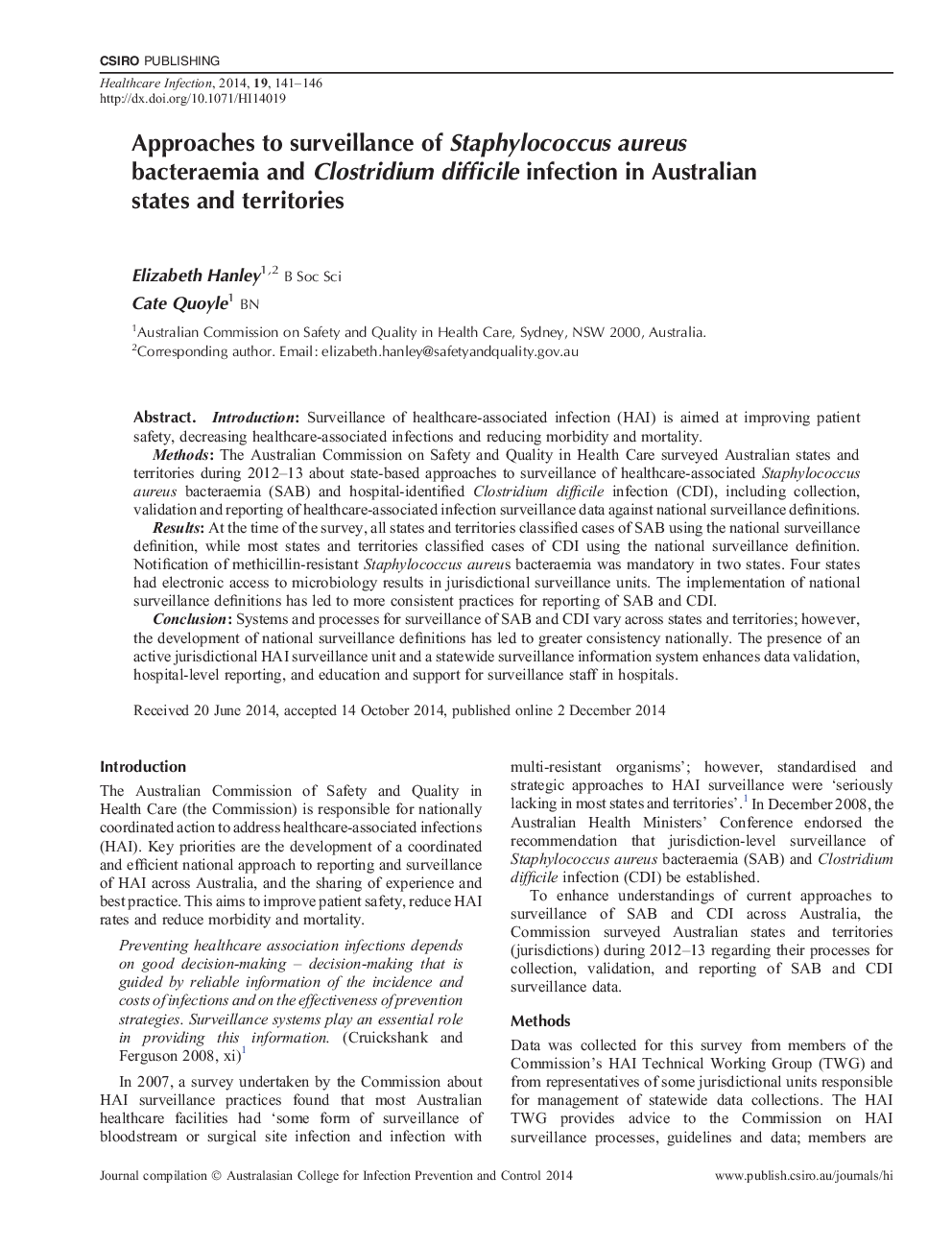| Article ID | Journal | Published Year | Pages | File Type |
|---|---|---|---|---|
| 2680205 | Healthcare infection | 2014 | 6 Pages |
IntroductionSurveillance of healthcare-associated infection (HAI) is aimed at improving patient safety, decreasing healthcare-associated infections and reducing morbidity and mortality.MethodsThe Australian Commission on Safety and Quality in Health Care surveyed Australian states and territories during 2012-13 about state-based approaches to surveillance of healthcare-associated Staphylococcus aureus bacteraemia (SAB) and hospital-identified Clostridium difficile infection (CDI), including collection, validation and reporting of healthcare-associated infection surveillance data against national surveillance definitions.ResultsAt the time of the survey, all states and territories classified cases of SAB using the national surveillance definition, while most states and territories classified cases of CDI using the national surveillance definition. Notification of methicillin-resistant Staphylococcus aureus bacteraemia was mandatory in two states. Four states had electronic access to microbiology results in jurisdictional surveillance units. The implementation of national surveillance definitions has led to more consistent practices for reporting of SAB and CDI.ConclusionSystems and processes for surveillance of SAB and CDI vary across states and territories; however, the development of national surveillance definitions has led to greater consistency nationally. The presence of an active jurisdictional HAI surveillance unit and a statewide surveillance information system enhances data validation, hospital-level reporting, and education and support for surveillance staff in hospitals.
